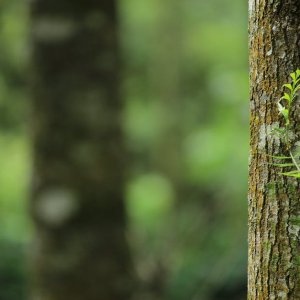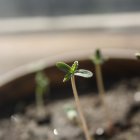- 4 maja 2022
How does marijuana affect the heart?
- 30 kwietnia 2022
CBD oil dosage - what are safe dosages?
- 28 kwietnia 2022
Marijuana - a natural antibiotic
Can marijuana help those suffering from sickle cell anemia?

Marijuana has been used in medicine for thousands of years. People have used this resinous flower to treat symptoms of physical and mental ailments. The list of conditions for which marijuana aids in treatment includes sickle cell anemia. This is an inherited disease caused by a mutation in the hemoglobin gene that leads to anemia, very severe pain, and even organ damage if not treated properly. What is sickle cell anemia and how can marijuana help treat it?
Healthy red blood cells are shaped like a biconcave disk. They store the genetic code within them, and their most important job is to transport oxygen to all cells in the body.
What is sickle cell anemia?
Sickle cell anemia is an inherited blood disorder. Healthy red blood cells are shaped like a biconcave disk. They store a genetic code within them, and their most important job is to transport oxygen to all cells in the body.
In anemia, a mutation in the hemoglobin gene causes the red blood cells to distort from their normal flexible form into a rigid plate, resembling a sickle in appearance. Under normal conditions, healthy cells are able to temporarily deform to squeeze through narrow blood vessels, while diseased cells are unable to flow. Consequently, they overlap each other, which blocks blood vessels and can lead to dangerous disorders that in extreme cases cause death within 1-2 hours.
Blocking blood flow to organs is also one of the main risks during a crisis and usually causes collective tissue damage leading to a shortened life span (although modern treatments have greatly improved this negative prognosis).
To be sickle cell anemia, it is enough that one of the parents suffers from this disease. However, this does not mean that the person will have to deal with the unpleasant symptoms of anemia, because both alleles of the hemoglobin gene must be mutated to suffer the effects of the disease all the time. If only one allele is mutated and the other is normal, the body will use both healthy and diseased blood cells.
The normal copy is able to produce over 50% of the required hemoglobin in carriers and symptoms of sickle cell anemia may not be experienced for life unless a "triggering" situation occurs. These include prolonged lack of oxygen (such as at high altitudes) and dehydration.
The most common symptoms of sickle cell anemia include:
- Red blood cell deficiency, anemia. Seizures of pain - occur when mutated blood cells block access to the circulatory system. Swelling of the hands and feet. Impairment, damage or inflammation of internal organs, which can lead to frequent infections. Slowed growth and delayed puberty. Problems with vision. Risk of stroke.
What are the treatment options for patients with sickle cell anemia?
There are several ways to manage and control the various symptoms of anemia.
Infants born with the condition are given folic acid, which is continued into adulthood, often with the addition of penicillin in early childhood. In acute cases of sickle cell anemia, blood transfusions are used to increase the number of healthy red blood cells.
For pain relief, only opioids are approved, at the same time heavy drugs for anemia sufferers. Many are highly addictive and have significant side effects, particularly negative effects on blood vessels and kidneys, which are already at risk due to the disease itself.
Currently, the only potential cure for sickle cell anemia is a bone marrow transplant.
Mosquitoes transmit malaria.
Sickle cell anemia - statistics
- Approximately 100,000 Americans suffer from sickle cell anemia. The disease is most common in dark-skinned people - it occurs in 1 in 365 births among African-Americans. This compares to a ratio of 1 in 16300 births among European nations. e.g., Spaniards. About 1 in 13 black children in Africa are born with some form of sickle cell anemia. In cases where two parents were ill, the child may suffer from a very severe form of the condition. This widespread occurrence of anemia in Africa is the result of a specific evolutionary adaptation - people with one copy of this gene, because of the shape of their red blood cells, are resistant to malaria, which takes a heavy toll in Africa. It is estimated that cases of sickle cell anemia will increase by 30% globally by 2050.
How can marijuana help patients with sickle cell anemia?
It has been repeatedly observed that sickle cell anemia sufferers use relatively much more marijuana than is the case in the general population. Patients repeatedly report that cannabis use provides a subjective sense of relief from pain, as well as reducing the experience of anxiety and depression.
In Jamaica, people with anemia use almost twice as much cannabis compared to healthy people (women: 19% vs. 10%; men: 65% vs. 37%). Most surprisingly, Jamaican patients smoke more despite a complete lack of expectation of maximum relief of sickle cell anemia symptoms - only 6% of respondents associated cannabis use with pain management and other discomforts.
So were sickle cell anemia patients reaching for cannabis out of habit, but was their subconscious giving them a signal about the positive effects of cannabis on their health?
Research and the Effects of Cannabis on Sickle Cell Anemia
In 2010, researchers at the University of Minnesota found that a synthetic THC analogue, CP 55940, was as effective as morphine sulfate in treating sickle cell anemia and associated severe pain in transgenic mice expressing the human form of severe sickle cell anemia. The huge advantage of this compound turned out to be that it was far more effective than any opioid, and at much lower doses.
In 2011, the same researchers presented another study, which was published in the Journal of the American Association of Hematology. The analysis suggested that CP 55940 was able to relieve acute pain associated with hypoxia and reoxygenation. The compound was found to be a full CB1 receptor agonist, but also acts as an antagonist at the GPR55 receptor.
In addition to this, it has been repeatedly shown that marijuana can be successfully used as a vasodilator, which in itself can help alleviate congestion caused by sickle cell buildup. On the other hand, however, there are some studies that suggest that cannabis may act as a vasoconstrictor under certain circumstances. This is especially true in the peripheral circulatory system (capillaries), which can lead to strokes. Currently, the results of these studies are being questioned because they were conducted on a study group in which many people smoked cigarettes in addition to marijuana, which are known to have a vasoconstrictive effect.
It has been repeatedly observed that people with sickle cell anemia use relatively much more marijuana than is the case in the general population.
Marijuana may not be a panacea for all existing diseases in the world but its usefulness and versatility is able to aid in the treatment of many diseases, including sickle cell anemia. In addition to its mood-enhancing, comfort-enhancing and euphoric effects, marijuana also has analgesic (pain-relieving) and anti-inflammatory (anti-edema) properties that are particularly important for sickle cell anemia patients.
Unlike potent and expensive specifics, a patient can develop the drug in the form of marijuana in their own home, so it is a good alternative to addictive and dangerous opioids.



















Top 3